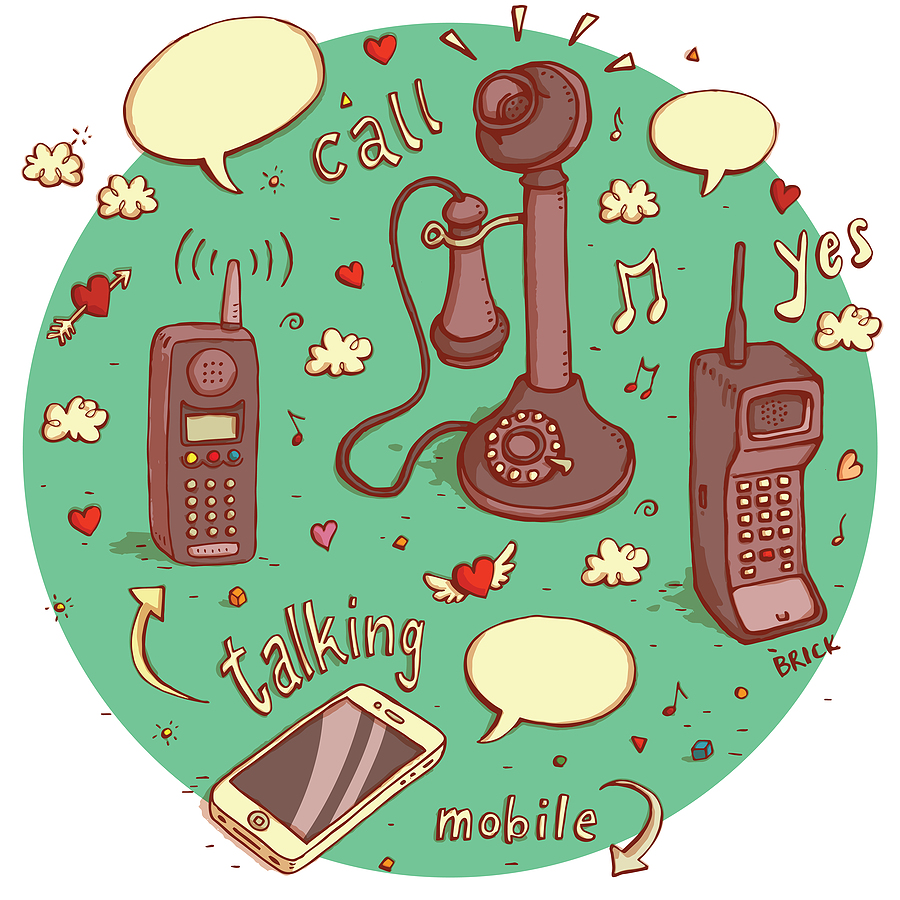Okay, I’ll admit it. Sometimes I can be a bit of a curmudgeon. Sometimes I like things a certain way. However, I’ve typically thought things through and am set in my decision. This old way of thinking was particularly strong when it came to allowing electronic devices in my leadership strategy or coaching sessions. To be candid, though, I’ve undergone an evolution in thinking regarding the use of technology in my client sessions and my own businesses.
I still firmly believe that, in a meeting, most electronics are distractions. When I see someone banging away on their phone, even if they’re typing notes, my internal dialogue tells me they’re ignoring everyone in the room and checking their Facebook status or playing Tetris. (Yes, I said ‘Tetris’. I know how much that alone dates me.)
I believe that the new “smart watches” should be renamed “annoying watches”. There’s nothing more aggravating than when a senior leader who has a new Apple watch receives a text then pretends to be sneaky by reading it under the table during a meeting. Does he think we’re all blind? I’m sure these are the same people who, as kids, got busted passing notes in class and had to stay after school.
I’ve repeatedly seen situations in which the team is in the middle of a good, healthy debate when a phone suddenly vibrates or a watch lights up then everyone reactively turns toward the distraction, either stalling or halting engagement altogether. It makes me think of Pavlov’s dogs and how the researcher was able to make dogs drool simply by ringing a bell when he fed them. After a while, he didn’t even have to feed them; he’d just ring the bell and the dogs drooled. Think about how most people act when a phone vibrates…
It’s for this reason that I’ve really pushed to keep all devices off or in airplane mode when in session. However, there have been some cracks in my dike holding back the tide of technology. It started with allowing for one laptop to be used by either a designated scribe or executive assistant during client sessions. I couldn’t argue with the perspective that this made sense to keep us on track with action items, issues, opportunities, and ‘rocks’ that came up throughout the day. There was no reason to ask someone to transcribe the content from the handwritten notes, so I relented. It was the right thing to do.
In other cases, I work with several organizations where the entire team (or parts of the team) fly in for our sessions. Usually everyone makes it, but sometimes we must set up a video conference to include the absent members. This isn’t ideal, but I have to say, meeting with people via video works rather well.
(I’m embarrassed to admit that when I only have one or two people participating in a video conference, I tend to forget they’re present. I’ve now gotten in the habit of writing their names and a smiley face on a large piece of paper and putting it on a chair so I don’t forget them. This seems to help.)
Because I have individual and group coaching clients around the country and a few in Europe, I’ve been investing in my video conferencing tools – I’ve settled on Zoom conferences and a 360-degree camera called Owl that works great. Both tools have become invaluable and are simple to use.
Just recently, I started taking the next steps in my tech journey with the inclusion of two 65-inch screens and wireless USB connections. Unfortunately, I have the handwriting of a 5-year-old and can barely spell my own name – an issue I’ve subjected my teams to for years with long, barely legible lists on whiteboards. This setup allows me to mirror a screen on the wall where I can easily track and list opportunities and challenges, and review the work teams have completed during the quarter. Translation: People can see what I type, and I have the added benefits of spell-check and neatly typed words. The second screen allows an assistant or scribe to run a separate computer for action items and notes. Both screens are seen in real time, so it ensures no one is playing Tetris or checking Facebook. This new step seems to keep things more organized and clearer while not acting as a distraction.
In other words, the technology isn’t acting as a distraction – instead, it seems to be working as a genuine asset. And it can springboard an evolution in thinking among team members, leaders, organizations, and entrepreneurs across the globe.
Truth be told, I don’t see a time when I will ever want to get rid of my whiteboards. I believe smart people working on a whiteboard can change the world. However, I now see how the benefit of allowing limited technology into sessions can outweigh the negative consequences. I still prefer all cell phones in airplane mode and believe there is no such thing as “smart watch,” though.
The point of this is that it took a little time. I reviewed and researched then pulled the trigger. I believe the change will be great for my clients. So, I ask you: Is there someplace you’re being a bit of a curmudgeon, and where incorporating more technology could shift from being a liability to an asset? It may be worth exploring if the time is right for you to make a change.
Are you turned off by technology in the workforce? Is your company in need of an evolution in thinking regarding electronics? We can help with that! Reach out to us today to find out how.https://entrepreneurial-advisors.com/contact/


